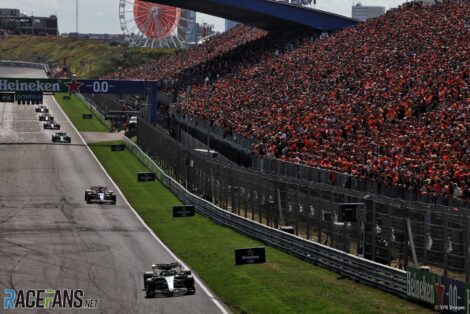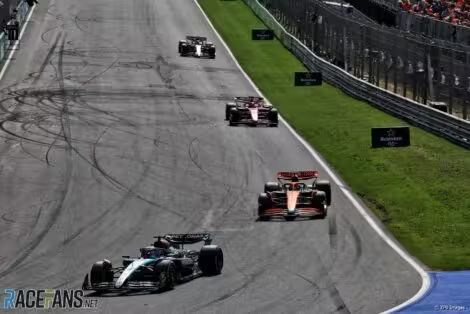George Russell was in a strong position early in the Dutch Grand Prix. He got ahead of Oscar Piastri at the start and held on to third place throughout the first stint.
Mercedes won three of the four races leading into the Dutch Grand Prix, so at this stage in proceedings it seemed a podium place was on the cards for Russell. So why did he slump to seventh at the finish, one place ahead of his team mate, who started down in 14th?
His first pit stop was on the slow side. He also pitted a lap after Charles Leclerc, losing a place to the Ferrari driver as a result. But his race really began to go awry after that.
Having held Piastri off through the first stint, when the McLaren driver appeared in his mirrors with eight-lap fresher tyres, Russell never looked like holding him back. He languished off the pace of the other front-runners at this stage, but cut the deficit after lap 43.
As the race entered its final stage, Russell’s lap times had risen again. Behind him Carlos Sainz Jnr had passed Sergio Perez and the pair were edging towards him. As Sainz came close to drawing within DRS range, Mercedes brought Russell in for a second pit stop.
Russell never regained the places he lost to Sainz and Perez at this point, so was the pit stop a mistake? Further ahead, Piastri caught Leclerc quickly but was unable to attack him, so could Russell have run to the end on his hard tyres and held off Sainz?
Mercedes said Russell was losing so much pace they had to pit him a second time. “Today we were lacking the speed to fight for much more than we achieved,” said the team’s trackside engineering director Andrew Shovlin.
Advert | Become a RaceFans supporter and
“We were not generating good grip and, consequently, were sliding around on the tyre. That led to higher degradation than our competitors and forced us into a two-stop race.”

The team might have been encouraged to pit Russell again after observing his team mate’s pace after his second pit stop. Lewis Hamilton was having a very different race after starting on the seventh row, passed several cars earlier on the soft tyres, then switched to hards.
Mercedes had nothing to lose by bringing Hamilton in again for a set of soft tyres as he had enough of a gap behind him to hold onto his position when he pitted. However he believed a one-stop could have been possible had he not made a mistake.
“I had a small…
Click Here to Read the Full Original Article at RaceFans…

